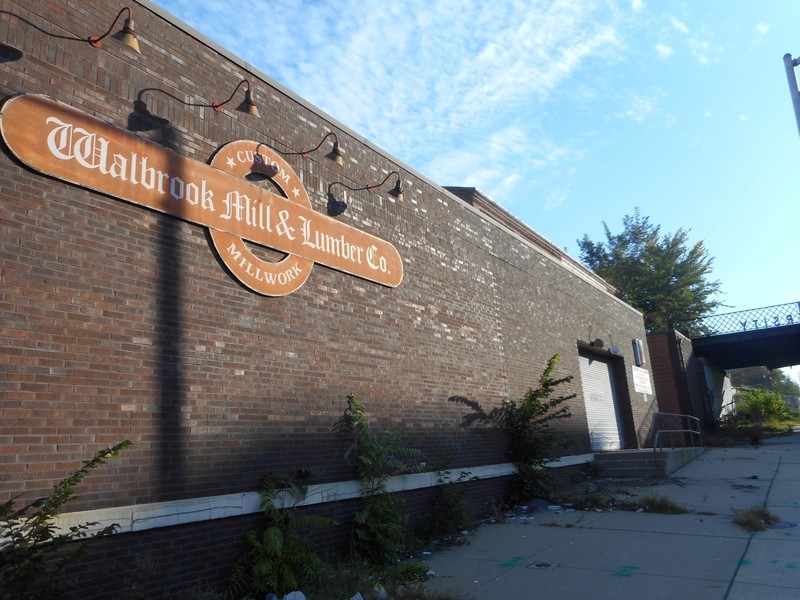ECS BLOG POST
Understanding Phase I ESA in Property Transactions
Learn about how Phase I ESAs provide actionable information to help manage risk and anticipate project costs.

A Phase I environmental site assessment (Phase I ESA) assesses environmental impacts associated with the current and historical use of the site and surrounding properties. Phase I ESAs are frequently performed as part of property transactions or during refinancing but are also performed as part of brownfields redevelopment studies, to pursue tax incentives and to qualify for CERCLA liability protection.
Conducting a Phase I ESA is an important component of the due diligence process before conducting a commercial property transaction.
A Phase I environmental site assessment (Phase I ESA) assesses environmental impacts associated with the current and historical use of the site and surrounding properties. Phase I ESAs are frequently performed as part of property transactions or during refinancing but are also performed as part of brownfields redevelopment studies, to pursue tax incentives and to qualify for CERCLA liability protection.
Conducting a Phase I ESA is an important component of the due diligence process before conducting a commercial property transaction.

ECS offers high-quality consulting services to help clients with complex, varied projects across the country, and our team is ready to assist with your next property acquisition or development project. Our Phase I site assessment team can quickly prepare reports that provide valuable insight into the potential presence of contamination from current or previous site owners that might impact a transaction.
In addition to ECS’ experience with specific scopes such as those required by Fannie Mae, Freddie Mac or US HUD, our team is ready to assist with portfolio work as well. Due to our national footprint, we can quickly mobilize our resources to help assess numerous properties at once on a condensed timeframe.
ECS offers high-quality consulting services to help clients with complex, varied projects across the country, and our team is ready to assist with your next property acquisition or development project. Our Phase I site assessment team can quickly prepare reports that provide valuable insight into the potential presence of contamination from current or previous site owners that might impact a transaction.
In addition to ECS’ experience with specific scopes such as those required by Fannie Mae, Freddie Mac or US HUD, our team is ready to assist with portfolio work as well. Due to our national footprint, we can quickly mobilize our resources to help assess numerous properties at once on a condensed timeframe.
 The Phase I site assessment process involves a site and area reconnaissance, regulatory file and historical documentation review, and interviews with persons having knowledge of the site. A standard Phase I ESA does not include sampling or analyses of soil, groundwater, air or building materials.
The Phase I site assessment process involves a site and area reconnaissance, regulatory file and historical documentation review, and interviews with persons having knowledge of the site. A standard Phase I ESA does not include sampling or analyses of soil, groundwater, air or building materials.
It is prudent to have a Phase I ESA performed to better understand potential environmental concerns associated with a property transaction or development project. A Phase I ESA and subsequent assessments help prospective purchasers make informed decisions and understand potential environmental costs.
 The Phase I site assessment process involves a site and area reconnaissance, regulatory file and historical documentation review, and interviews with persons having knowledge of the site. A standard Phase I ESA does not include sampling or analyses of soil, groundwater, air or building materials.
The Phase I site assessment process involves a site and area reconnaissance, regulatory file and historical documentation review, and interviews with persons having knowledge of the site. A standard Phase I ESA does not include sampling or analyses of soil, groundwater, air or building materials.
It is prudent to have a Phase I ESA performed to better understand potential environmental concerns associated with a property transaction or development project. A Phase I ESA and subsequent assessments help prospective purchasers make informed decisions and understand potential environmental costs.
The Phase I ESA is relatively fast — it is possible to conduct an assessment in a month or less. This process is most effective when performed at the start of a transaction’s due diligence period, so it would not be expected to hinder a typical commercial real estate transaction. In addition to its rapid completion, there are numerous other benefits from Phase I ESA findings.
As businesses come and go, a commercially zoned property can change hands several times. A Phase I ESA can identify past uses that are common sources of environmental impact, which may not be readily apparent. For example, if the site was previously occupied by a gas station or dry cleaner, the risk of environmental impact is higher than if the property had been occupied by a retail store or office space.
Though the property’s intended use may not present obvious environmental risks, previous owners may have engaged in activities that caused contamination. The Phase I ESA can identify these issues and help ECS’ remediation team develop an appropriate scope for a Phase II assessment.
 Lenders frequently require that a Phase I ESA be performed before processing a loan. This step is included in an effort to find previously unknown contamination that might impact the value of the property, as this could affect the buyer’s ability to repay the loan.
Lenders frequently require that a Phase I ESA be performed before processing a loan. This step is included in an effort to find previously unknown contamination that might impact the value of the property, as this could affect the buyer’s ability to repay the loan.
ECS has experience tailoring our reports to meet the unique scope requirements of lenders and has been designated as a pre-approved vendor by numerous national and international lenders. ECS also frequently prepares Phase I ESA reports to meet the requirements of US HUD, Fannie Mae and Freddie Mac. This experience can help support a smooth due diligence process and sees that lender concerns are properly identified and addressed.
If a Phase I assessment discovers suspect contamination, a Phase II can be performed to better understand the nature and extent of impact to the subject property and whether additional steps such as remediation are necessary. This information can be used to better understand environmental costs associated with development projects and to negotiate a lower price during property transactions.
The Phase I ESA is relatively fast — it is possible to conduct an assessment in a month or less. This process is most effective when performed at the start of a transaction’s due diligence period, so it would not be expected to hinder a typical commercial real estate transaction. In addition to its rapid completion, there are numerous other benefits from Phase I ESA findings.
As businesses come and go, a commercially zoned property can change hands several times. A Phase I ESA can identify past uses that are common sources of environmental impact, which may not be readily apparent. For example, if the site was previously occupied by a gas station or dry cleaner, the risk of environmental impact is higher than if the property had been occupied by a retail store or office space.
Though the property’s intended use may not present obvious environmental risks, previous owners may have engaged in activities that caused contamination. The Phase I ESA can identify these issues and help ECS’ remediation team develop an appropriate scope for a Phase II assessment.
 Lenders frequently require that a Phase I ESA be performed before processing a loan. This step is included in an effort to find previously unknown contamination that might impact the value of the property, as this could affect the buyer’s ability to repay the loan.
Lenders frequently require that a Phase I ESA be performed before processing a loan. This step is included in an effort to find previously unknown contamination that might impact the value of the property, as this could affect the buyer’s ability to repay the loan.
ECS has experience tailoring our reports to meet the unique scope requirements of lenders and has been designated as a pre-approved vendor by numerous national and international lenders. ECS also frequently prepares Phase I ESA reports to meet the requirements of US HUD, Fannie Mae and Freddie Mac. This experience can help support a smooth due diligence process and sees that lender concerns are properly identified and addressed.
If a Phase I assessment discovers suspect contamination, a Phase II can be performed to better understand the nature and extent of impact to the subject property and whether additional steps such as remediation are necessary. This information can be used to better understand environmental costs associated with development projects and to negotiate a lower price during property transactions.

Learn about how Phase I ESAs provide actionable information to help manage risk and anticipate project costs.
Learn about how Phase I ESAs provide actionable information to help manage risk and anticipate project costs.